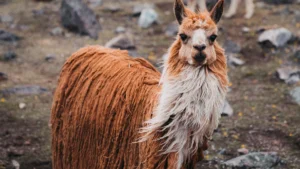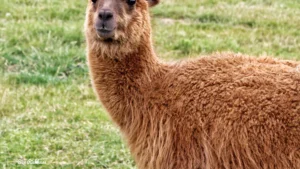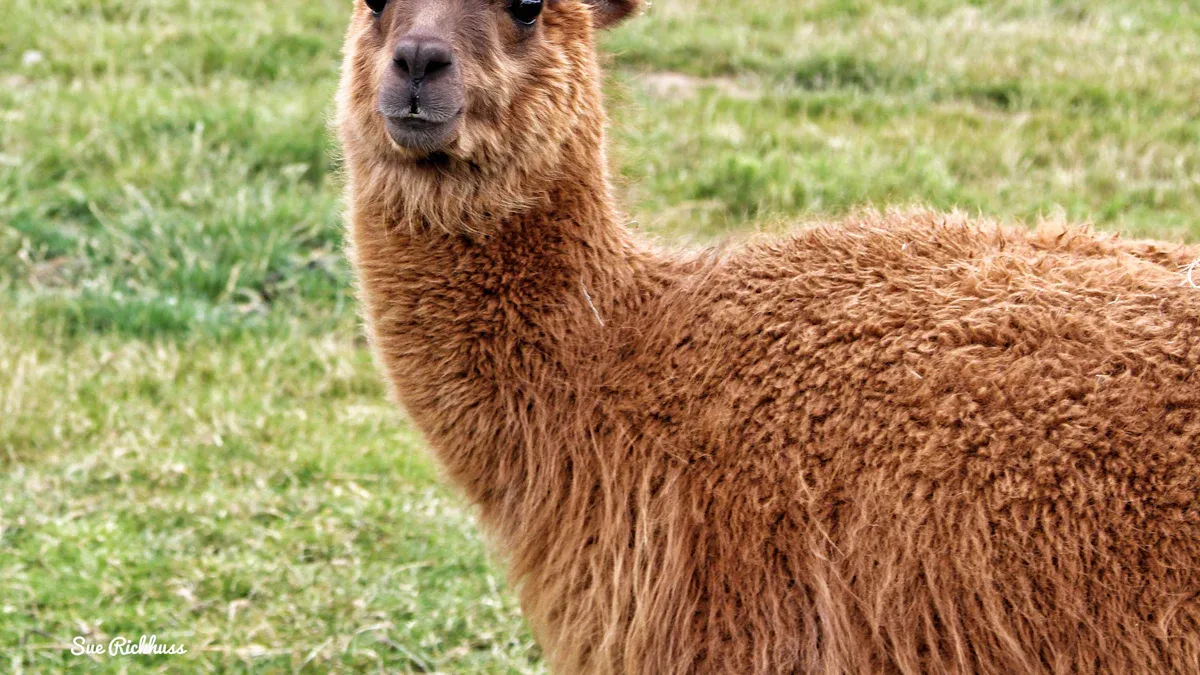
Merino wool vs alpaca is a common debate when it comes to outdoor clothing. Merino wool is known for its strength and is a top choice for active wear. When comparing merino wool vs alpaca, both fibers offer unique benefits. Surveys show that merino wool vs alpaca often comes down to personal preference: merino wool is durable and rarely causes itching, while alpaca wool is warmer and feels even softer. The table below highlights the main reasons people choose between merino wool vs alpaca for outdoor activities:
Reason | Merino Wool | Alpaca Wool |
|---|---|---|
Durability | Stays stretchy and lasts long; great for outdoor gear | Softer, not as strong; often mixed for more strength |
Warmth | Keeps you warm; needs to be thicker for same warmth | Warmer; keeps heat in better |
Moisture Management | Soaks up sweat; good for sweaty activities | Pushes water away; dries faster |
Comfort | Does not itch, soft, and lets air in | Silky and soft; does not have lanolin |
When deciding between merino wool vs alpaca, consider how much warmth you need, how much you sweat, and the type of outdoor use you have in mind.
Key Takeaways
Merino wool is strong and lasts a long time. It handles sweat well and keeps you comfy when you run or hike.
Alpaca wool is warmer and feels softer. It is best for cold, dry days or slow activities like camping or easy hikes.
Both wools are good for people with sensitive skin. Alpaca wool is hypoallergenic and less likely to make you itch or have allergies.
Merino wool takes longer to dry but soaks up sweat better. Alpaca wool dries faster and keeps you warm even if it gets wet.
You should pick merino or alpaca wool based on what you do outside, the weather, and what feels best to you.
Quick Comparison
Key Features Table
Picking the best material for outdoor clothes is important. It can change how comfortable and safe you feel outside. Merino wool and alpaca wool are both good for different reasons. This comparison shows how they are not the same.
Note: Alpaca fibers are hollow, so they keep heat well. Merino wool fibers are crimped, which helps trap air for warmth and stretch.
Feature | Merino Wool | Alpaca Wool |
|---|---|---|
Fiber Structure | Crimped, traps warm air | Hollow, increases insulation |
Warmth | Warm, needs thicker fabric for extreme cold | Warmer per gram, excellent insulation |
Durability | Very durable, keeps shape in outdoor gear | Softer, less elastic, often blended for strength |
Moisture Management | Absorbs sweat, good for active outdoor use | Repels water, dries quickly |
Odor Resistance | Odor resistant, contains lanolin | Odor resistant, hypoallergenic, no lanolin |
Skin Sensitivity | Soft, may cause allergies in rare cases | Hypoallergenic, gentle on sensitive skin |
Sustainability | Renewable, but requires more resources | Eco-friendly, low environmental impact |
Cost | Moderate to high | Usually higher, luxury clothing |
New ways to make alpaca wool have made better outdoor clothes. These new clothes use alpaca’s warmth, softness, and how it handles sweat. Some companies mix alpaca with merino wool or other fibers. This makes the clothes last longer and feel nice. Merino wool is still a favorite for outdoor gear. It is good at handling sweat and keeps its shape for a long time.
Tests in labs show merino wool can keep you warm better than alpaca wool sometimes. Alpaca fibers are about 30% better at keeping heat than regular sheep’s wool. Both wools are good for people with sensitive skin. Alpaca wool does not have lanolin, so it is less likely to bother your skin.
Think about what you will do outside, the weather, and what feels best to you. The table above can help you pick the right wool for your next trip.
Merino Wool
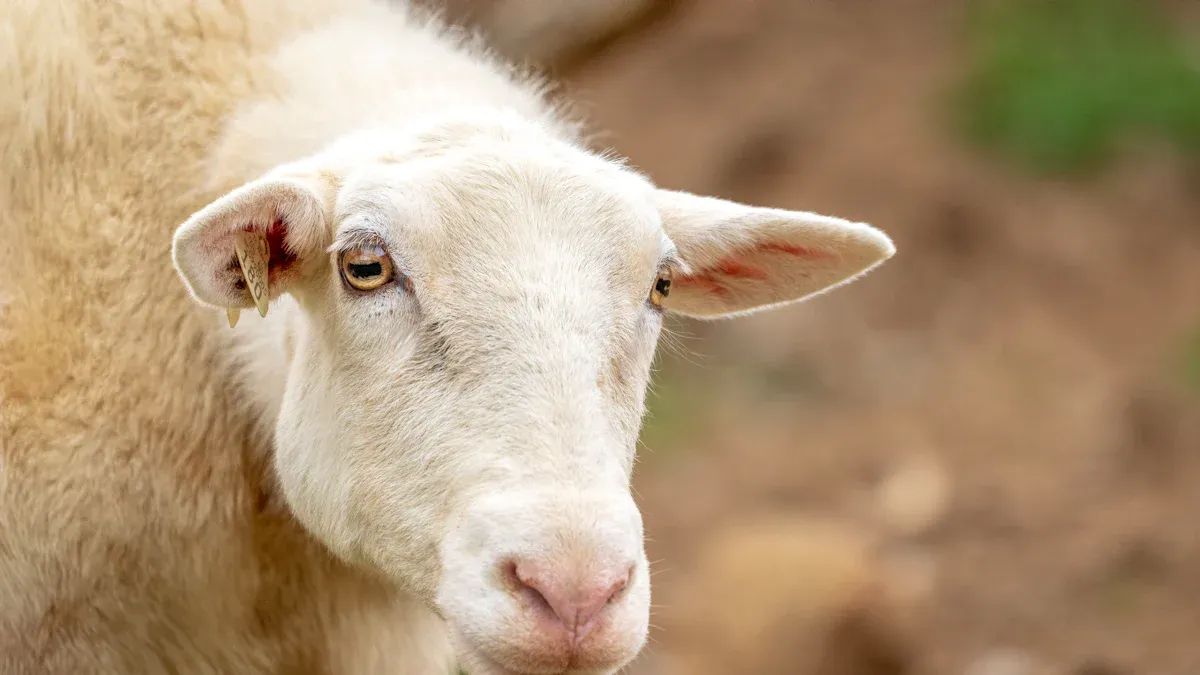
Characteristics
Merino wool is special because its fibers are very thin. These fibers are between 13.5 and 32 microns wide. This makes merino wool soft and comfy to wear. Each fiber has a layer with tiny scales on the outside. These scales keep out water but let sweat vapor pass through. This helps your skin breathe. Inside the fiber, there are two parts called the orthocortex and paracortex. These parts make the fiber wavy, which traps air for warmth. The inside also has strong and flexible areas. The strong part gives the fiber its strength. The flexible part has sulfur, which helps it bend, take in dye, and handle sweat.
Merino wool is made mostly of keratin protein. This protein is shaped like a spiral. The spiral shape lets the fiber stretch and bounce back. Merino wool also has sulfur, which pulls in water. The outside keeps water away, but the inside can hold a lot of sweat vapor. It can hold up to 30% of its weight in moisture and still feel dry. These things make merino wool soft, breathable, good at handling sweat, and tough. That is why it is great for base layer clothes.
Tip: Merino wool is soft and lets air in, so it is good for people with sensitive skin.
Outdoor Use
Merino wool works well outside. Its wavy fibers trap warm air near your body. This keeps you warm without making your clothes heavy. Merino wool stays warm even if it gets wet. Other materials do not do this. The fiber lets extra heat and sweat out. This stops you from getting too hot when you move. Merino wool soaks up sweat or snow and dries fast. This keeps you warm and comfy in cold or wet weather.
Merino wool helps control your body temperature in all weather. In cold, wet weather, it takes in water vapor and gives off heat. This keeps you warm. In hot, dry weather, it moves sweat away from your skin and lets it out into the air. This helps you stay cool. The outside makes water form drops, so it wicks sweat well. These features make merino wool a top pick for base layers. It is great for hiking, skiing, and running.
Merino wool base layers give you:
Great warmth
Good sweat control
Air flow
Comfort in many temperatures
Alpaca Wool
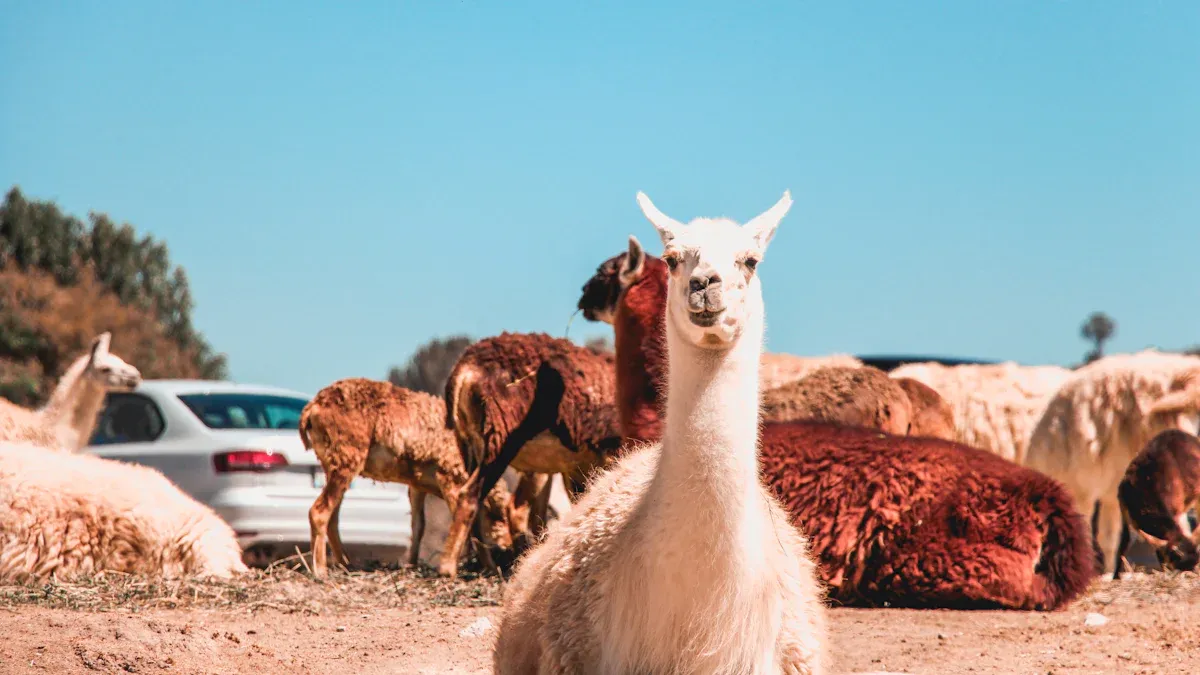
Characteristics
Alpaca wool is different from other natural fibers. Each fiber has a hollow middle. This hollow part traps warm air inside. Alpaca wool can be up to four times warmer than merino wool. It does not feel heavy or thick. The outside of alpaca fibers is smooth and soft. Alpaca wool does not have sharp scales like merino wool. This makes it feel extra soft and not itchy. Alpaca wool does not have lanolin. This means it is hypoallergenic and safe for sensitive skin.
Note: Alpaca wool does not pill much and keeps its shape well. This helps it last a long time.
Alpaca wool is great at moving sweat away from your skin. It does this 85% better than sheep’s wool. This keeps you dry and comfy. The fiber is light but also strong. Alpaca wool is warm, lets air in, and feels soft. That is why many people pick it for outdoor clothes.
Alpaca Wool | Merino Wool | Cotton | |
|---|---|---|---|
Fiber Structure | Hollow, traps warm air | Solid, crimped | Solid, no hollow structure |
Surface Scales | Smooth, non-prickly | Pointed, can be prickly | Smooth, different composition |
Lanolin Content | None, hypoallergenic | Contains lanolin | None |
Moisture Management | Excellent, wicks moisture away | Absorbs moisture | Absorbs, less effective |
Durability & Pilling | Strong, resists pilling | Prone to pilling | Varies |
Thermal Regulation | Excellent | Good | Low |
Outdoor Use
Alpaca wool works well for outdoor use. The hollow fibers keep you warm in cold weather. They also help cool you down when it is hot. Alpaca wool moves sweat away from your skin. This keeps you dry when you are active. The fiber lets air move through, so you do not get too hot.
Alpaca wool stays warm even if it gets wet. This makes it good for trips with changing weather. The fiber fights bad smells by stopping bacteria. Clothes made from alpaca wool stay fresh longer. People with sensitive skin like alpaca wool because it is very soft and does not itch.
Key benefits of alpaca wool for outdoor clothing:
Very warm without being heavy
Moves sweat away well
Lets air in for comfort
Stays soft and strong for a long time
Safe for sensitive skin and fights odor
Alpaca wool gives warmth, softness, and works well outdoors. People who love hiking and camping like these features. They want comfort and protection when outside.
Merino Wool vs Alpaca: Comparison
Warmth
Warmth is very important when picking outdoor clothes. Both merino wool and alpaca wool keep you warm, but they work in different ways. Alpaca wool has hollow fibers that hold air inside. This helps trap heat and keeps you warmer. Merino wool fibers are solid but have a wavy shape. The waves also trap air for warmth. Studies show alpaca wool gives more warmth for its weight than merino wool. For example, alpaca quilts need less fiber to be as warm as merino wool quilts. But how warm you feel also depends on how thick and tight the clothes are made.
Factor | Alpaca Wool | Merino Wool |
|---|---|---|
Fiber Structure | Hollow, traps more air | Crimped, traps air |
Warmth-to-Weight Ratio | Higher, lighter for same warmth | Needs more weight for same warmth |
Winner: Alpaca wool is best for staying warm when you are not moving much in the cold. Merino wool is still warm but may need to be thicker.
Comfort
Comfort is very important for outdoor clothes. Many people say alpaca wool feels softer than merino wool. Alpaca wool is often called silky, like cashmere. People with sensitive skin often pick alpaca wool because it does not itch. Merino wool is also soft, especially if the fibers are very fine. Some brands, like Darn Tough, make merino wool socks that people wear for days without problems. Both types of wool are comfortable, but some people like alpaca wool more because it is extra soft and warm, even when thin.
Alpaca wool: Very soft, silky, and gentle on skin.
Merino wool: Soft, stretchy, and comfortable for most people.
Winner: Alpaca wool is the softest, but merino wool is also very comfy, especially if it is high quality.
Moisture Management
Moisture control is important for outdoor fun. Merino wool can soak up to 30% of its weight in sweat. This helps keep your skin dry when you sweat a lot, like when hiking or running. Alpaca wool does not soak up as much water, but it dries faster and stays warm even when wet. Both wools do not move sweat as well as man-made fabrics. Merino wool is better for handling sweat when you are active. Alpaca wool is better for drying fast and staying warm if you get wet.
Winner: Merino wool is best for handling sweat when you are moving a lot. Alpaca wool is better for drying quickly and keeping you warm when wet.
Durability
How long your clothes last is important. Merino wool has longer fibers that do not break or wear out easily. This makes merino wool gear last longer, even if you use it a lot. Some merino wool uses special spinning to make it even stronger. Alpaca wool is softer and does not stretch as much, so it can break more easily. Many alpaca wool clothes are mixed with other fibers to make them stronger.
Winner: Merino wool lasts longer and is better for rough use.
Odor Resistance
Not smelling bad is important for long trips. Alpaca wool has keratin protein, which helps stop smells and fights germs. This works better and lasts longer than chemical treatments. Alpaca wool keeps away bacteria and stays fresh for a long time. Merino wool also fights odor, but there is less lab data about it than alpaca wool. People say both wools work well, but alpaca wool might be a little better.
Winner: Alpaca wool is best for stopping smells, but merino wool also works well.
Skin Sensitivity
Some people have skin that gets itchy or red. Alpaca wool does not have lanolin, which can cause allergies. This makes it safe for most people with sensitive skin. Its smooth fibers almost never bother your skin. Merino wool is also soft, and very fine merino wool can even help with eczema. But some people still get rashes or itching from merino wool, though this does not happen often.
Alpaca wool: Hypoallergenic, safe for most sensitive skin.
Merino wool: Usually safe, but rare allergies can occur.
Winner: Alpaca wool is the safest for people with sensitive skin.
Sustainability
Caring for the planet is important. Both merino wool and alpaca wool can hurt the environment, mostly because animals make methane gas. Studies show alpaca wool can make more carbon per kilogram than merino wool. Merino wool also needs more land and uses chemicals to clean out lanolin. Both wools can be certified for good farming, like RWS for merino and RAS for alpaca. These labels mean better care for animals and less harm to nature.
Aspect | Alpaca Wool Production | Merino Wool Production |
|---|---|---|
~53 per kg fiber | 7.8–35.8 per kg wool | |
Chemical use | Low | Higher (lanolin removal) |
Certification | RAS | RWS |
Winner: Both have problems for the environment, but certified products are better for nature.
Cost
Price matters when picking wool clothes. Alpaca wool is harder to find and costs more to make. Outdoor clothes made from alpaca wool usually cost $5 to $15 more than merino wool. For example, merino wool socks cost about $15, but alpaca wool socks cost $20 to $30. Alpaca wool costs more because there is less of it and it is seen as a luxury.
Winner: Merino wool is cheaper for most outdoor clothes.
Alpaca vs. Merino Wool: Recommendations
Activities
You need the right clothes to be safe and comfy outside. Merino wool is best for hard activities. People pick merino for running and tough hikes. It helps you stay dry by moving sweat away. Merino base layers stretch and go back to shape. This makes them great for sports and moving a lot. Alpaca wool is better for easy activities. It feels soft and keeps you warm. Alpaca is good for camping, slow hikes, or travel. Many people wear alpaca for daily outdoor fun when they want to feel cozy.
Experts say merino wool is best for sports. Alpaca wool is best for staying warm and comfy on slow trips.
Activity Type | Best Fiber | Reason |
|---|---|---|
Running, Backpacking | Merino wool | Moves sweat, strong, stretches well |
Casual Hiking, Camping | Alpaca wool | Very warm, soft, and comfy |
Everyday Outdoor Use | Alpaca wool | Feels nice on skin, keeps heat in |
Climate
Weather is important when picking wool. Alpaca wool gives more warmth for its weight. Its hollow fibers hold heat, so it is great for cold or changing weather. Merino wool also keeps you warm, even if it gets wet. This makes merino good for rainy or mixed weather. Both wools keep you warm when damp. But merino dries faster and packs down smaller. Experts say alpaca is best for cold, dry trips. Merino is better for wet or mixed weather.
Wool Type | Key Properties | |
|---|---|---|
Merino wool | Breathes, warm when wet, fights odor | Hard activities, wet or changing weather |
Alpaca wool | Softer, hollow inside, warmer | Cold, dry weather, easy outdoor fun |
Preferences
What you like matters when picking outdoor clothes. Some people want the softest feel on their skin. Merino wool is fine and gentle, so it is good for sensitive skin. Others want more warmth and care about where wool comes from. Alpaca wool is lighter and warmer. It comes from farms that help families in the Andes. Buying alpaca wool helps these people. People who care about the planet or want no lanolin often pick alpaca. Merino brands now try to treat animals well, which some people like.
Pick merino wool for:
Sensitive skin
Gear for top performance
Pick alpaca wool for:
Extra warmth
Soft and cozy feel
Good for the planet and people
Both alpaca and merino wool are great for outdoor clothes. The best one for you depends on what you do, the weather, and what you care about.
Merino wool is a great pick for most outdoor clothes. It lets air in, handles sweat well, and feels comfy when you move. Alpaca wool is warmer and feels smooth, so it is best for cold days and people with sensitive skin. Both types last long and are good for the planet, but alpaca wool usually costs more. People who love being outside should think about what they need most from their clothes. The table below shows the main ways these fibers are different:
Feature | Merino Wool | Alpaca Wool |
|---|---|---|
Warmth | Good | Superior |
Moisture Control | Excellent | Moderate |
Softness | Very soft | Silky, hypoallergenic |
Price | Affordable | Expensive |
Picking merino wool or alpaca wool depends on what you do, the weather, and what feels best to you.
FAQ
Is alpaca wool warmer than merino wool?
Alpaca wool keeps you warmer for its weight. Its hollow fibers hold heat inside. People pick alpaca for cold weather trips.
Does merino wool itch more than alpaca wool?
Most people think merino wool feels soft. Alpaca wool is even softer and almost never itches. Alpaca has no lanolin, so it does not bother skin.
Which wool dries faster after getting wet?
Merino wool soaks up more water and dries slower. Alpaca wool pushes water away and dries fast. Hikers like alpaca because it dries quickly in wet places.
Can people with allergies wear both types of wool?
Alpaca wool is safe for most people with allergies. It has no lanolin, so it does not cause problems for sensitive skin. Merino wool is also soft, but some people may still have allergies.





